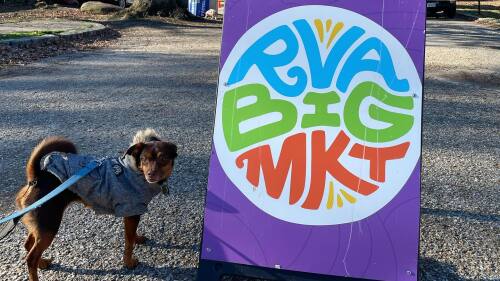William Byrd II completed the first survey of Richmond, VA for its colonial inhabitants in 1737. This was even before King George II had granted a Town Charter for the land in 1742. We’re diving into the history of how Richmond’s streets got their names.
Downtown/Shockoe
At the time of the charter, the city was a fraction of its current geographic size, bordered by what’s now Broad Street to the north and the river to the south and stretching from what are now 17th to 25th Streets from west to east. North-south streets were numbered first through ninth and east-west streets were lettered alphabetically.
When Richmond became the state capital in 1780, city leaders gave east-west streets new names: A street became “Arch Street,” B Street became “Byrd Street,” and so on.
Some of the names were lost to history — do you know anyone who calls Broad “Haxall?” — but a few stuck around. This is where Canal, Franklin, and Grace come from.
Cary Street — Cary was formerly D Street, then became Dover Plan Road. The name Cary comes from Colonel Archibald Cary, a Virginian who served in the House of Burgesses — the legislative body of the colony — from 1756-1776.
Main Street — Main was E Street, then Elm Street, but it became Main because it was the main thoroughfare of the town.
Foushee Street — is named for Richmond’s first mayor, William Foushee. He was a surgeon in the American Revolution and served as mayor from July 1782-June 1783. He was also appointed to be the city’s postmaster by President Thomas Jefferson — a position he kept for the last 16 years of his life.
West End
Heading west, many origins stem from prominent owners of property where roads were being built.
Patterson Avenue — This road is named is named for Dr. Richard Archibald Patterson, a doctor and tobacco manufacturer.
Staples Mill Road — The Staples family owned and operated a corn-grinding mill before the Civil War — thus, Staples Mill Road.
Parham Road — Junius Parham, the namesake of Parham Road, was a Tennessean who acquired the land through his wife, Mary Smith. He began selling the property in the last two decades of the 19th century. By 1900, the road had its name, even though Junius and Mary stayed in Tennessee.
Three Chopt Road — Three Chopt Road comes from a historic marking system. The road began as a trail which was marked by a triple pattern of notches on trees. English colonists referred to the road as the King’s Highway or Three Notched Road. Around 1819, the name Three Chopped Road was used on a map, then the spelling changed to “Chopt” on a map from 1853.
Northside
Brook Road — Brook Road dates back at least to the American Revolution. The exact origins are unclear, but a man named Thomas Williamson owned a plantation on the land which he called “The Brook” or “Brook Hill.” In 1812, a new path was chartered as Brook Turnpike. In 1815, it became the first avenue in the state. Brook Avenue became a road when travel improvements were made.
Southside
A batch of streets in Manchester are named for naval officers.
Hull Street — Isaac Hull commanded the USS Constitution during the American Revolution.
McDonough, Perry, Porter, Bainbridge, and Decatur Streets — These are all named for commanders from the Revolution and War of 1812.
For some more recent history, look to Arthur Ashe Boulevard. The street, formerly known just as Boulevard, was renamed after a City Council vote in February 2019. The global humanitarian, activist, and tennis star grew up in Richmond. Different groups campaigned for the change in 1993 and 2003 before the successful effort in 2019.
Are there any outstanding street histories on your mind? Let us know and we’ll see if we can find the answers for you. This is an all-you-can-street situation.


![Downtown view of Richmond [no title]_mid 20th century _vcu libraries digital collection](https://6amcity.brightspotcdn.com/dims4/default/ba2b64c/2147483647/strip/true/crop/970x546+0+41/resize/1000x563!/quality/90/?url=https%3A%2F%2Fk1-prod-sixam-city.s3.us-east-2.amazonaws.com%2Fbrightspot%2Fd5%2Fc6%2Fee274ab35f6503450fd1d65422a5%2Fdowntown-view-of-richmond-no-title-mid-20th-century-vcu-libraries-digital-collection-1.jpg)











